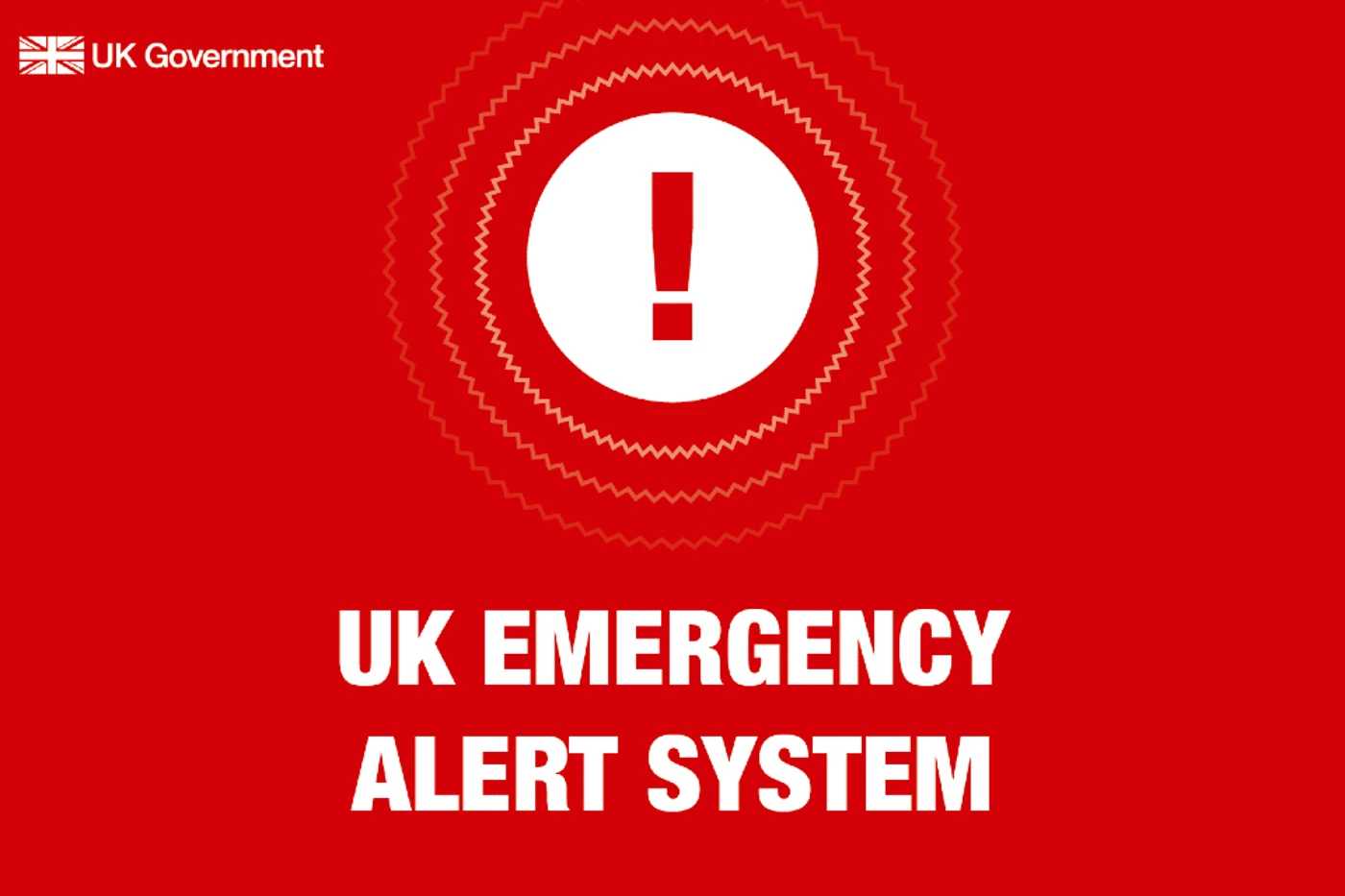The UK Government’s emergency alerts system will send an emergency alert to all mobile phones in September.
The test will see compatible phones vibrate and make a siren sound for 10 seconds while displaying a message at 15:00 BST on 7 September, even if they are set to silent.
This comes after its first nationwide test in April 2023 when a significant minority of mobile phones, notably on the Three UK network, did not receive the alerts.
A further issue was identified with the Welsh language version of the test message.
In addition, “a very small number” of devices received more than one alert due to a few cellular masts continuing to broadcast after the end of the test, and people travelling between England and Wales as it took place would have experienced two alerts.
The government also revealed that the message did not reach around 7% of compatible devices.
Emergency Alerts System
The UK Government initially launched its Emergency Alerts warning service in 2021, with public trials in East Suffolk and Reading.
Since then, the system has been used to send alerts to 4.5 million phones in Scotland and Northern Ireland during Storm Eowyn in January 2025, and 3.5 million in England and Wales during Storm Darragh the previous month.
It was also used to aid the evacuation of more than 10,000 residents in Plymouth as an unexploded 500kg World War Two bomb was carefully removed and taken out to sea to be detonated after being uncovered.
Emergency Alerts are a public information service that the Government has developed to alert citizens to emergencies, both nation-wide and in their local area, that represent a severe threat to life and/or property.
They are text-based messages that will be broadcast from cell towers to people’s mobile devices, detailing the emergency and actions people need to take to ensure their safety. Emergency Alerts will be sent across all networks.
Emergency Alerts appear on your device’s home screen. You have to acknowledge them before you can use your device’s other features. They appear as a notification and may include telephone numbers or website links to further information.
A loud, distinct tone and vibration is usually associated with the message to raise awareness of the hazard or threat.
Stop what you’re doing and follow the instructions in the alert. Read the content carefully. An Emergency Alert is likely to include a link to gov.uk/alerts where further information is contained, and/or a helpline.
If you’re driving when you get an alert, find somewhere safe to stop before using your phone or tablet. It is illegal to use a hand-held device while driving, even when receiving an emergency alert.
You may get alerts about severe flooding, fires, explosions, terrorist incidents or public health emergencies. Emergency alerts will only be sent by the emergency services and/or government departments, agencies and public bodies that deal with emergencies.
For most people, the chance of receiving an alert will be low.
What you need to know
The emergency services and the UK government do not need your phone number to send you an alert. You will get alerts based on your current location – not where you live or work.
No one will collect or share data about you, your device or your location when you receive an alert. No personal information (such as telephone number, identity or location) is used in the sending of any Emergency Alert.
Emergency alerts are free and you do not need to sign up for them or download an app. You can opt out of some emergency alerts, but you should keep them switched on for your own safety.
To opt out of Emergency Alerts
- Search your settings for ‘emergency alerts’.
- Turn off ‘severe alerts’ and ‘extreme alerts’.
Phone handsets and devices
Make sure your device has all the latest software updates. Emergency alerts work on iPhones running iOS 14.5 or later and Android phones and tablets running Android 11 or later.
Factors which might mean you will not receive an alert
There are some factors which might mean you will not receive an alert. These include:
- A device needs to be on 4G or 5G to receive the alert. To note, a device that is normally on 4G or 5G can often connect to a 3G or a 2G signal inside buildings.
- The device does not have the latest software update or the software update has not been released (older devices have a slower update cycle).
- The device is not able to receive the alerts as it is no longer supported.
- The device is not a 4G-enabled device.
- The device was switched off. Although if you are in proximity to a cellular tower when the alert is broadcast, you will receive the alert when your phone is switched back on.
- The device was not connected to a mast broadcasting the Emergency Alert.



